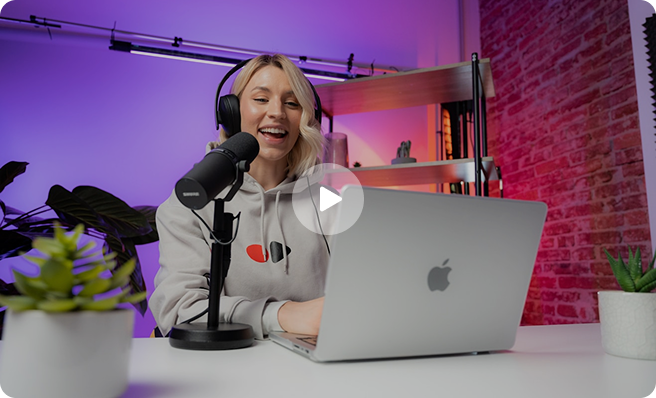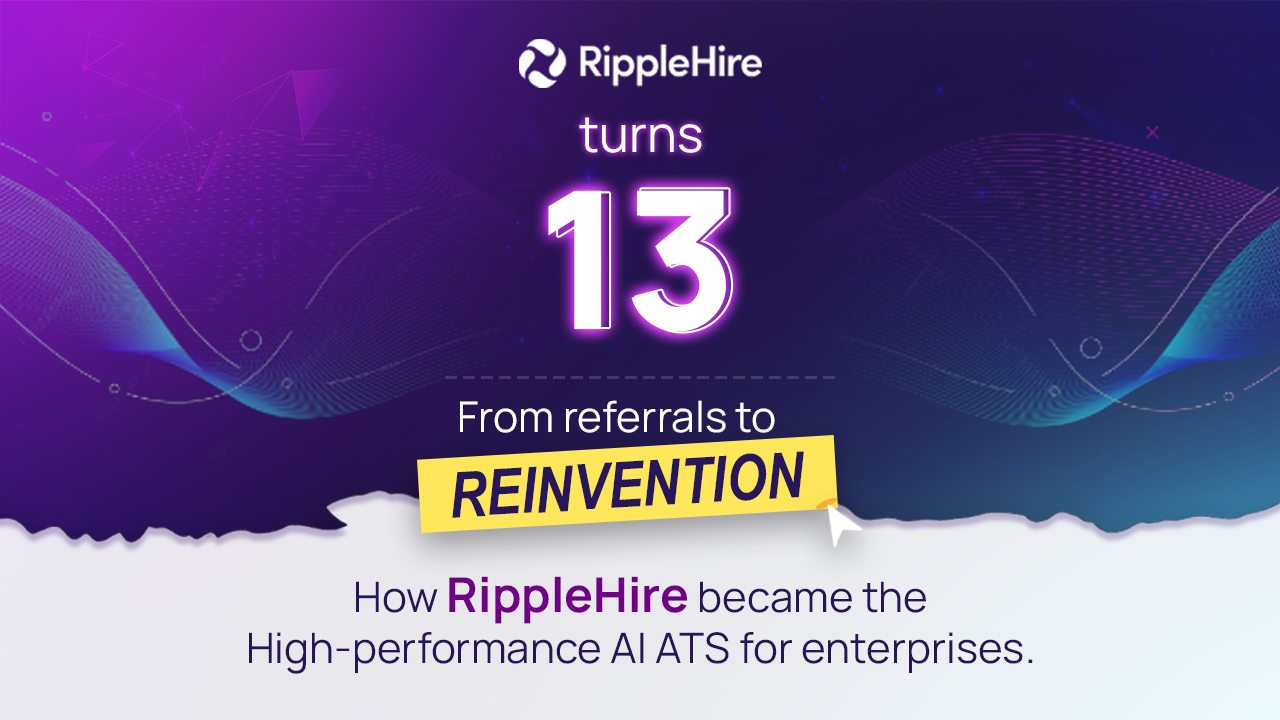Gamifying Campus Hiring to Engage Gen Z and Build a Modern Employer Brand
Look around and you’ll notice how much of daily life is gamified. Your fitness app tracks streaks, your learning app celebrates milestones, even payment apps reward you with points and badges. These small nudges keep people engaged, motivated, and coming back for more.
Campus hiring, on the other hand, often feels like it’s stuck in another era.
Long forms, silent waiting periods, and one-way presentations don’t hold the attention of today’s students. This generation has grown up with instant feedback and interactive experiences. When your hiring process feels slow or stiff, you lose their interest before you even begin.
That’s where gamifying campus hiring comes in. In this blog, we'll show you how you can bring gamification to your campus drive, and hiring to make the process less boring.
What gamification in hiring really means
When people hear “gamification,” they often imagine flashy games, virtual avatars, or gimmicky contests. That’s not what it’s about. Gamification is the use of game-like elements (points, levels, leaderboards, and instant feedback) to make everyday processes more engaging and rewarding. It’s not about playing games; it’s about designing experiences that motivate participation and keep people involved.
In hiring, gamification brings those same principles into assessments, campus challenges, onboarding tasks, or even internal recruiter workflows.
For example:
- Display a simple on-screen progress bar or digital “journey card” showing candidates where they are: registered → shortlisted → interview scheduled → results pending.
- Structure your drive like a series of levels: basic screening, skill test, situational task, and interview. Clearing one level unlocks the next, with small digital badges or messages like “You’ve advanced to Level 3: Final Interview.”
- Award badges for milestones like “Early Applicant,” “Top 10% Communicator,” or “Drive Day Star.”
Why gamification works for Gen Z
Gen Z has grown up in a world built around interaction, not instruction. They’ve learned through apps, competed through leaderboards, and stayed motivated through visible progress. The same mechanics that keep them learning or exercising can keep them engaged in your hiring process.
Here’s why it clicks:
- Shorter attention spans, higher expectations. Gen Z isn’t impatient — they’re used to instant feedback. Gamified elements like progress bars or quick results acknowledge their need for response in real time.
- They value experiences over transactions. A hiring process that feels like an interactive challenge tells them more about your company than any PowerPoint deck. It signals that your culture is modern, responsive, and people-first.
- Clear goals make them perform better. When candidates can see where they stand — for example, “you’ve cleared level 1: aptitude,” “next up: role play round” — it reduces anxiety and builds motivation.
- Friendly competition keeps energy high. Leaderboards or team-based problem-solving events create buzz on campus and push participation rates up without extra marketing spend.
- Instant recognition matters. Small rewards like digital badges, shout-outs, or certificates tap into the same validation loop that keeps people hooked on apps. Recognition in the moment feels authentic and memorable.
But the biggest reason gamification works is psychological. It creates a sense of progress in a process that often feels opaque. Instead of waiting in silence after applying, candidates see visible milestones and know they’re moving forward. That single change transforms the hiring experience from uncertain to engaging — and that’s what makes them stay interested in your brand.
5 ways to design gamification that actually works
It’s easy to get excited about scores and badges, but great gamification is more than decoration. It needs intent, balance, and clarity to actually improve your hiring outcomes.
1. Start with purpose, not points
Before adding scores or badges, decide what behavior you actually want to encourage. The best gamified systems focus on outcomes — like completing all application steps, showing up for interviews on time, or giving feedback promptly.
For instance, instead of just awarding points for quiz scores, you can reward consistency: students who complete all stages on time or share accurate details during registration. This turns participation itself into a win.
Gamification without intent feels gimmicky. When it’s rooted in purpose, it helps you shape the right candidate behaviors, such as engagement, honesty, and persistence, that make hiring smoother for both sides.
2. Keep it simple and intuitive
If it feels like a game manual, it’s already failed. Gamification should feel natural, not like an extra app candidates need to figure out.
- Use simple cues: progress bars, tick marks, or “Next unlocked” messages.
- Keep rules visible on-screen so nobody’s confused about how to move ahead.
- Limit elements to 2–3 types (like points + levels + badges). Too much detail distracts from the experience.
For example, a campus drive app can show a simple tracker : “You’re on step 3 of 5: Interview Scheduled.” That clarity keeps students focused and reduces recruiter queries by half.
Simplicity wins attention. Complexity loses it.
3. Reward effort and transparency, not just top scores
Many students drop out of gamified systems when only the top 5% are celebrated. Make sure your design also rewards participation and honesty.
Start by recognizing milestones like:
- Submitting assessments early
- Providing all required documents
- Completing all drive-day steps
You could create a “Committed Candidate” badge or share quick feedback messages like “Thanks for completing your skill task. Your recruiter will reach out soon.”
This small shift makes gamification inclusive. It motivates average performers to stay engaged while still letting your top scorers shine. The real win is keeping everyone active till the end of the hiring process.
4. Integrate feedback loops everywhere
Games work because they talk back — every action gets a response. Your hiring process should too.
Imagine this flow:
- After a student submits a test, they instantly get “Great effort — your score puts you in the top 25%.”
- After an interview, they receive a timeline: “Feedback review in progress. Expect updates within 48 hours.”
- After final results, they get a digital completion badge.
These small feedback loops remove the biggest frustration in campus hiring which is silence. Candidates stay informed, recruiters build trust, and your brand looks transparent by design.
You don’t need fancy tools for this. Even simple automation through your ATS can keep the conversation alive at scale.
5. Make it reflect your culture
Gamification works best when it mirrors who you are as an employer. If your company values collaboration, add team-based challenges. If innovation is your strength, design scenario-based problem tasks.
For example, a tech firm could build a “Build the Feature” challenge where students earn points for creative ideas that match real products. A financial services company could gamify analytical rounds with interactive case simulations.
Whatever you choose, make sure every element feels like you. When students experience a hiring process that reflects your real culture — supportive, curious, data-driven — they remember it long after the offer letter.
Gamification then becomes more than engagement. It becomes a live preview of what working with you feels like.
Make gamified hiring effortless with RippleHire
Bringing gamification into campus hiring sounds exciting, but it can quickly get complex — multiple campuses, thousands of candidates, hundreds of moving parts. That’s where RippleHire makes it simple.
RippleHire’s AI-powered ATS helps you design and run engaging, high-volume hiring drives with structure and speed. You can set up from interactive assessments and instant scoring to smart nudges that keep everyone on track.
With built-in analytics and behavioral science, RippleHire helps you track participation, identify top performers faster, and personalize communication at every stage. The result is a recruitment process that feels less like a queue and more like an experience which is exactly what Gen Z responds to.
Leading enterprises across 50+ countries already use RippleHire to deliver faster hires, stronger engagement, and 4.8/5 candidate experience scores. If you’re ready to make your campus drives as dynamic as the talent you’re hiring, book a demo with RippleHire and see how gamified hiring can work at scale.
FAQs
FAQs
What does gamification mean in campus hiring?
Gamification means adding game-like elements such as points, levels, and badges to make the hiring process more interactive and engaging. It doesn’t mean playing games—it’s about creating an experience where candidates can see their progress, receive instant feedback, and stay motivated throughout the process.
How does gamification help attract Gen Z talent?
Gen Z candidates respond well to instant feedback, clear goals, and fun, interactive experiences. Gamified hiring gives them visible progress and real-time recognition, which keeps them engaged. It also shows that your company is modern, tech-driven, and aligned with how they already learn and interact online.
What are some examples of gamified hiring activities?
Companies use interactive assessments, digital progress trackers, and leaderboards to keep students motivated. For example, a hiring drive could have levels like “application complete,” “test cleared,” and “interview scheduled.” Some firms also create team challenges, quizzes, or scenario-based games to test real skills in a fun way.
Why is gamification effective in recruitment?
Gamification makes the hiring process more transparent and rewarding. Instead of waiting in silence, candidates see where they stand and get instant updates. This reduces dropouts, builds excitement, and makes your company memorable. It turns hiring from a routine process into an experience that reflects your culture.
Can small companies use gamification in campus hiring?
Yes, you don’t need big budgets or fancy tools to gamify hiring. Even small actions—like showing candidates their progress bar, sending quick “level unlocked” messages, or rewarding consistent participation—can make the experience engaging. The key is to keep it simple, intentional, and aligned with your brand.
How can technology make gamified hiring easier?
Modern hiring platforms like RippleHire make it easy to run gamified recruitment drives. They automate scoring, track candidate progress, and send instant updates or badges at each stage. Recruiters save time, candidates stay engaged, and the entire hiring process feels smoother and more dynamic.















